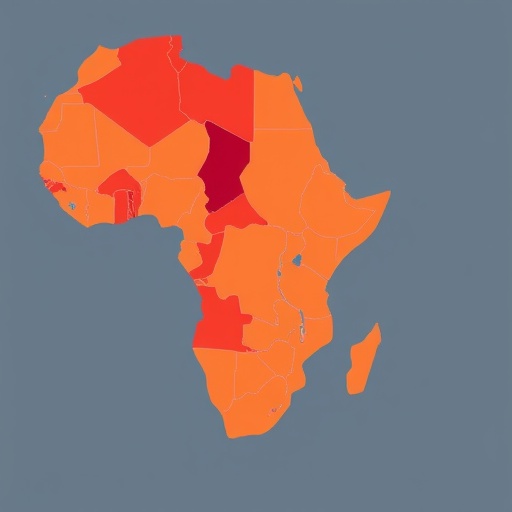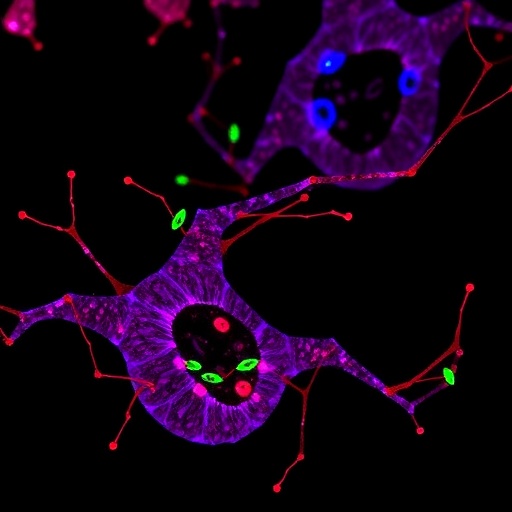WASHINGTON – Efforts to control brucellosis in the Greater Yellowstone Area (GYA) should focus on reducing the risk of transmission from elk, which are now viewed as the primary source of the infection in new cases occurring in cattle and domestic bison, says a new report by the National Academies of Sciences, Engineering, and Medicine. Federal, state, and tribal groups should work in a coordinated and transparent manner to address brucellosis in multiple areas and jurisdictions.
Brucellosis is found in cattle, bison, and elk and can result in late-gestation abortion, decreased milk production, and loss of fertility. Other animals can be infected by coming into contact with infectious materials (such as aborted fetuses or afterbirth), and Brucella abortus – the bacterial pathogen that causes brucellosis – can spread to calves through nursing. Brucella abortus is not considered a major public health threat in the U.S., but there are potential economic consequences. States must maintain brucellosis-free status, among other criteria, to sell live cattle.
Since the Academies' first report on brucellosis in the GYA issued in 1998, the disease has re-emerged in cattle and domestic bison herds in the region. Between 1998 and 2016, 22 cattle herds and five privately owned bison herds were affected in Idaho, Montana, and Wyoming; all other states in the U.S. are free of the disease.
"One of the most significant changes in our understanding of brucellosis since 1998 is that the disease in the Yellowstone area can be traced genetically and epidemiologically to transmission from elk, not bison," said Terry McElwain, Regents Professor in the Paul G. Allen School for Global Animal Health at Washington State University and chair of the committee that conducted the study and wrote the report. "Federal and state agencies should focus on controlling transmission from elk, including undertaking modeling efforts that can characterize and quantify the risk of brucellosis transmitting and spreading from and among elk."
To manage brucellosis in a complex ecosystem like that of the GYA, stakeholders and experts across disciplines will need to coordinate and cooperate to understand the costs and benefits of actions taken to control the spread of brucellosis. The committee said it is critical to incorporate participation by leadership at highest levels of federal and state agencies in initiating and coordinating discussions and making decisions.
The infected elk populations have spread beyond the traditionally accepted boundaries of the GYA. In addition to the challenges of locating them, there is no effective brucellosis vaccine for elk, unlike for cattle and bison. In the past, the National Park Service, U.S. Department of Agriculture, members of local tribal groups, and the three GYA states worked together to manage the risk of transmission from wild bison to domestic cattle and bison. A similar joint effort is needed to reduce transmission of brucellosis between elk and livestock.
Under a 2010 interim rule to regionalize brucellosis control, the three GYA states created designated surveillance areas (DSAs) to monitor the disease in specific zones and to reduce the economic impact in unaffected areas. Brucellosis has been detected outside the original DSAs, resulting in expansion of surveillance boundaries.
Currently, there is lack of uniformity in rules and standards in detecting infected cattle, which has resulted in an uneven approach to surveillance and setting boundaries that accurately reflect risk. If DSA boundaries are not expanded in a timely manner in response to wildlife cases of brucellosis, there is an increased probability that exposed or infected livestock may not be detected in time to prevent the further spread of infection as they are marketed and moved across the country. The committee recommended establishing uniform risk-based standards for expanding surveillance boundaries in response to finding brucellosis in wildlife.
To make timely and data-driven decisions for reducing the risk of brucellosis, the committee also recommended federal and state agencies adopt an active adaptive management approach – a decision-making process to reduce uncertainty of outcomes over time. This approach should include hypothesis testing and mandated periodic scientific assessments that would equip the responsible entities with the necessary information to make decisions for managing brucellosis transmission.
While eradicating brucellosis in wildlife from the GYA remains a distant goal, the committee said the focus should be on making significant progress toward reducing or eliminating brucellosis transmission from wildlife to domestic species. In order to achieve this, federal and state agencies should consider several different management options that can reduce the risk of brucellosis transmission. Such tools include reducing the elk population by hunting, contraception trials in elk, and conducting tests on elk for brucellosis infection and subsequently removing them.
Another tool highlighted in the report is the potential to close supplemental feedgrounds for elk. Evidence suggests that incremental closure of feedgrounds could reduce the prevalence of the disease in the broader elk population and could benefit overall elk health in the long term. The committee recommended that state and federal land managers take a strategic, stepwise, science-based approach to analyzing and evaluating how the closure of feedgrounds would affect elk health, risk of transmission to cattle, and brucellosis prevalence.
The committee also recommended developing a bio-economic model to address the complex nature of managing brucellosis in the Greater Yellowstone ecosystem. Such a model would provide a framework for decision making that would take into account the socio-economic costs and benefits of reducing transmission from wildlife to domestic cattle and bison, the reports says.
###
The study was sponsored by the U.S. Department of Agriculture's Animal and Plant Health Inspection Service. The National Academies of Sciences, Engineering, and Medicine are private, nonprofit institutions that provide independent, objective analysis and advice to the nation to solve complex problems and inform public policy decisions related to science, technology, and medicine. They operate under an 1863 congressional charter to the National Academy of Sciences, signed by President Lincoln. For more information, visit http://national-academies.org. A roster follows.
Contacts:
Riya V. Anandwala, Media Relations Officer
Joshua Blatt, Media Relations Assistant
Office of News and Public Information
202-334-2138; e-mail [email protected]
national-academies.org/newsroom
Follow us on Twitter @theNASEM
Copies of Revisiting Brucellosis in the Greater Yellowstone Area are available at http://www.nap.edu or by calling 202-334-3313 or 1-800-624-6242. Reporters may obtain a copy from the Office of News and Public Information (contacts listed above).
THE NATIONAL ACADEMIES OF SCIENCES, ENGINEERING, AND MEDICINE
Division on Earth and Life Studies
Board on Agriculture and Natural Resources
Committee on Revisiting Brucellosis in the Greater Yellowstone Area
Terry F. McElwain* (chair)
Regents Professor Emeritus
Paul G. Allen School for Global Animal Health
College of Veterinary Medicine
Washington State University
Pullman
L. Garry Adams
Senior Professor and Former Associate Dean of Research
College of Veterinary Medicine and Biomedical Sciences
Texas A&M University
College Station
Cynthia Baldwin
Professor
Department of Veterinary and Animal Sciences
University of Massachusetts
Amherst
Michael B. Coughenour
Senior Research Scientist
Natural Resource Ecology Laboratory
Colorado State University
Fort Collins
Paul C. Cross
Research Wildlife Biologist
Northern Rocky Mountain Science Center
United States Geological Survey
Bozeman, Mont.
Richard D. Horan
Professor
Department of Agricultural, Food, and Resource Economics
Michigan State University
East Lansing
David A. Jessup
Associate Researcher and Wildlife Veterinarian
Wildlife Health Center
University of California
Davis
Dustin P. Oedekoven
Executive Secretary and State Veterinarian
South Dakota Animal Industry Board
Pierre
David W. Pascual
Professor
Department of Infectious Diseases and Pathology
College of Veterinary Medicine
University of Florida
Gainesville
Valerie E. Ragan
Director
Center for Public and Corporate Veterinary Medicine
Virginia-Maryland College of Veterinary Medicine
Blacksburg, Va.
Glynn T. Tonsor
Professor
Department of Agricultural Economics
Kansas State University
Manhattan
STAFF
Peggy T. Yih
Staff Officer
* Member, National Academy of Medicine
Media Contact
Riya Anandwala
[email protected]
202-334-2138
@theNASEM
http://www.nas.edu
############
Story Source: Materials provided by Scienmag




